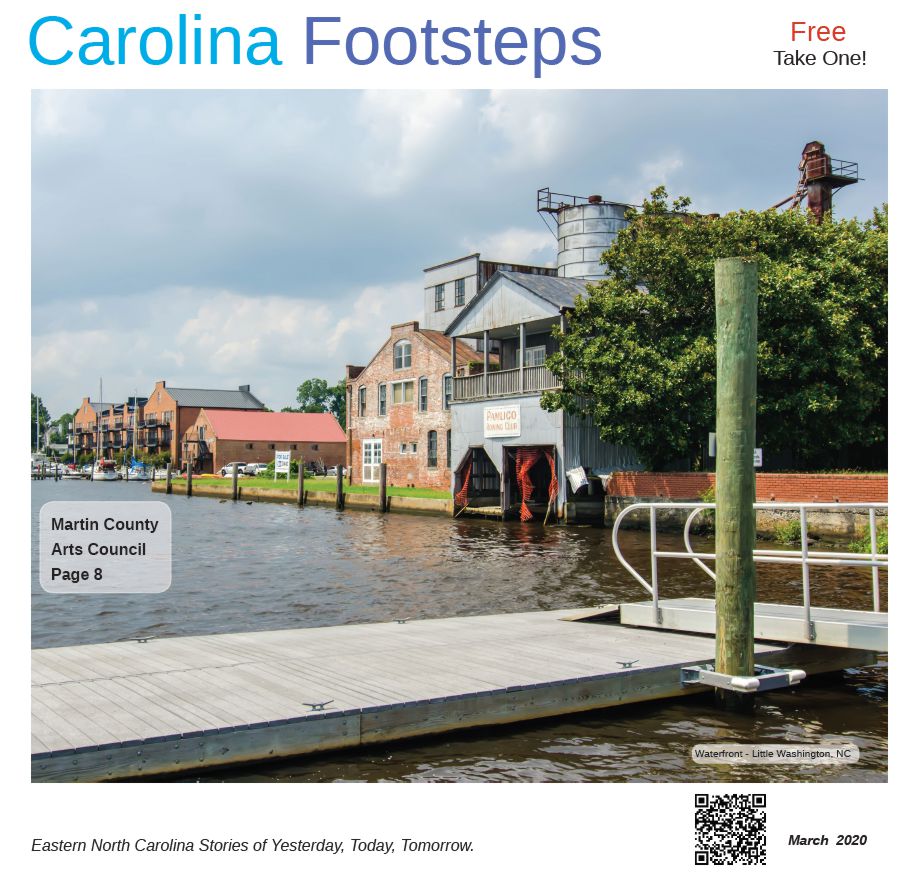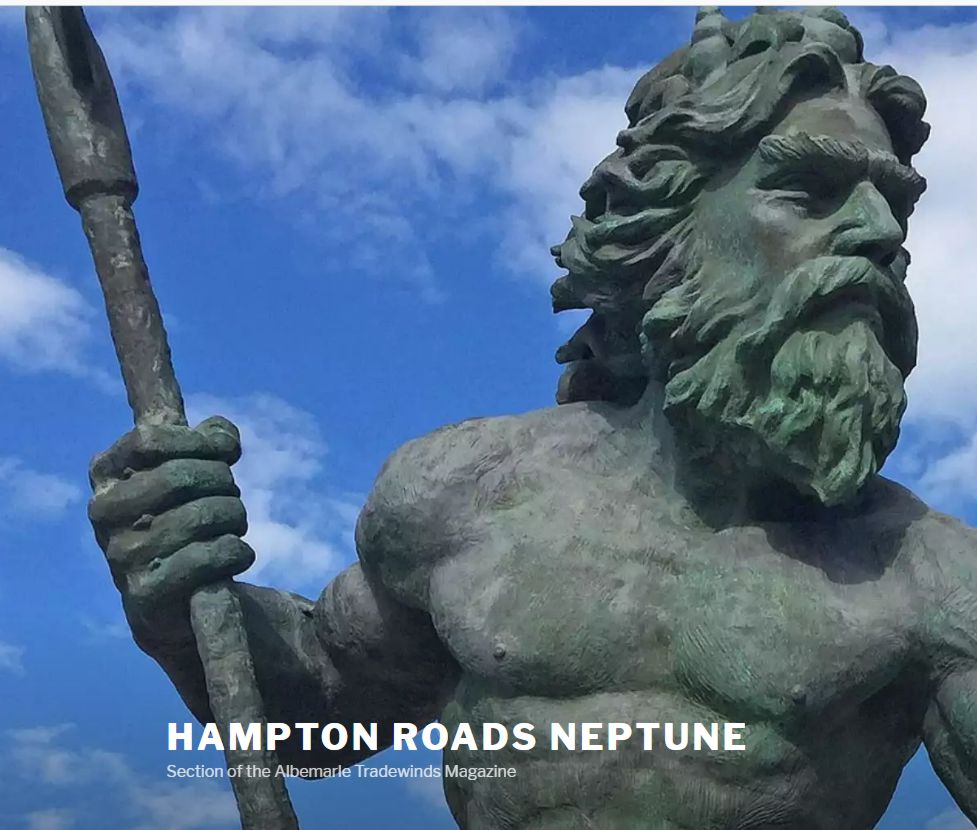The mythology of the lost colony began in 1937 with Paul Green's play. The idea that 117 colonists were left on Roanoke Island and vanished without a clue was created to sell tickets and create a mystery. Prior to the play, no one considered the colony lost, in fact, most people had never heard of the colony at all before the play immortalized them. The play, therefore, is a double edge sword, it immortalized a period in history but at the same time completely overshadowed the actual history with fictional drama. For example, the colony was never lost, Manteo and Wanchese were not chiefs nor were either of them from Roanoke Island and they never fought each other.
So what really happened? To understand the fate of the colony one must understand the voyages that came from England to America before the 1587 colony. One must understand the historical context, the situation that the colony was left in when the Governor departed to get supplies. We all know Governor John White instructed the colony to carve the name of where they relocated to on a tree or door frame and to put a cross under it if they left for danger. We also know that when White returned in 1590 he found the word CROATOAN carved in all capital letters on a palisade that surrounded where the settlement had been but the houses, boats, and colonists were gone.
Croatoan is Hatteras Island and is the first place the English actually landed in 1584. It was on Croatoan that they first met Manteo and on Croatoan that the English lived for 6 weeks in 1584 and for a few months in 1585. The English had a good relationship with the Croatoan. Perhaps this is why in 1587 when one of the “lost” colonists (George Howe) was killed on Roanoke the Governor sent Manteo and 25 Englishmen to Croatoan to find out who had killed him and if peace could be made. The Croatoan hosted the English to a feast and told them it was the Secotan tribe that had killed Howe. Upon reconnecting with the Croatoan White wrote:
“We answered them [Croatoan] that our coming was only to renew the old love that had existed between us and them at the first and to live among them as brethren and friends.”
This made sense because the Secotan had also attacked a group of 15 Englishmen in 1586 killing two of them. It is not that the Secotan were bloodthirsty savages, the English had murdered the Secotan chief, Wingina and burned down a Secotan village in 1585 starting the conflict. The Croatoan and Secotan were mortal enemies too. In 1587, before White left the colony the Croatoan had raided a Secotan village where Mann’s Harbor is today and stole all the corn and pumpkins and shared them with the English.
When White saw Croatoan carved on the palisade there was no doubt in his mind the colony had gone to Croatoan, their only ally in the New World and a place the English had lived before. He stated:
“The next morning it was agreed by the captain, myself with the master and others to weigh anchor and go for the place at Croatoan where our planters were.”
Unfortunately, a storm rolled up and blew White's ship 23 miles out to sea. John White had hitched a ride with what amounted to pirates. They were not concerned with the colony and wanted to go home. Seven of them had already died including Captain Spicer, John White’s only real friend on the ship. When Spicer died so did White’s influence over the crew and they headed home shipwrecking in Ireland. White later wrote to Queen Elizabeth’s court historian, Richard Hayklut:
“I was greatly joyed that I had safely found a certain a token of their safe being at Croatoan, which is the place where Manteo was born and the savages of the Island our friends.”
There is absolutely no reason to think the colony did not go to Croatoan because the historical documents are very straight forward about it. Conversely, the adjacent mainland was at war with the English and had already killed one of the colonists by shooting him sixteen times with arrows and smashing his brains in with a club.
The real mystery is why no one ever looked for the colony in their stated destination. Alas, some professionals finally have taken a look at Hatteras Island. Digging in one of the many Croatoan village sites that dot the land between Buxton and Hatteras Village, 16th century English artifacts HAVE BEEN FOUND in the Croatoan villages. They are on display in Hatteras village under the care of the Croatoan Archaeological Society (CAS) and were dug up by Dr. Mark Horton of the University of Bristol, England. Bristol and the CAS have been conducting digs for 10 years and continue to find thousands of artifacts.
The only problem is that since the English lived and traded with the Croatoan in 1584 and 1585 and 1587 it is hard to determine exactly on which voyage these artifacts came to Croatoan. Common sense tells you the colony went to Croatoan but proving it for sure may take a few more digs. The oral history of the Hatteras tribe told John Lawson in 1701 that:
“Several of their ancestors were white people who could speak out of a book as we do the truth of which is confirmed by gray Eyes being found frequently amongst these Indians and no others….an uncontested truth amongst the inhabitants of this place: which is that the ship which brought the first Colonies does appear among them which they call Sir Walter Raleigh’s ship and the truth of this has been affirmed to me by men of the best credit in the country.”
If one can forget the mythology about the colony being lost and focus on the real history both written and oral as well as the archaeology, it is no longer a mystery and for that matter never was. Go to Hatteras and see the artifacts for yourself, it is free. They are in the community building behind the Hatteras Library. Keep an eye out for National Geographic, Travel Channel and Discovery Channel, which have all been covering the archaeology on Hatteras. The most in-depth coverage, however, is in the documentary “Finding Croatoan” by Rain Bennette, which will be out next year.
As a teacher, I encourage anyone interested in any aspect of history to read the primary sources. Look at any science that has been done and don’t get your information from popular fiction. What you will find is the truth and the truth about the colony is they were never lost. If interested get the book “Croatoan Birthplace of America.” https://www.buybooksontheweb.com/product.aspx?ISBN=0-7414-5469-6
So what really happened? To understand the fate of the colony one must understand the voyages that came from England to America before the 1587 colony. One must understand the historical context, the situation that the colony was left in when the Governor departed to get supplies. We all know Governor John White instructed the colony to carve the name of where they relocated to on a tree or door frame and to put a cross under it if they left for danger. We also know that when White returned in 1590 he found the word CROATOAN carved in all capital letters on a palisade that surrounded where the settlement had been but the houses, boats, and colonists were gone.
Croatoan is Hatteras Island and is the first place the English actually landed in 1584. It was on Croatoan that they first met Manteo and on Croatoan that the English lived for 6 weeks in 1584 and for a few months in 1585. The English had a good relationship with the Croatoan. Perhaps this is why in 1587 when one of the “lost” colonists (George Howe) was killed on Roanoke the Governor sent Manteo and 25 Englishmen to Croatoan to find out who had killed him and if peace could be made. The Croatoan hosted the English to a feast and told them it was the Secotan tribe that had killed Howe. Upon reconnecting with the Croatoan White wrote:
“We answered them [Croatoan] that our coming was only to renew the old love that had existed between us and them at the first and to live among them as brethren and friends.”
This made sense because the Secotan had also attacked a group of 15 Englishmen in 1586 killing two of them. It is not that the Secotan were bloodthirsty savages, the English had murdered the Secotan chief, Wingina and burned down a Secotan village in 1585 starting the conflict. The Croatoan and Secotan were mortal enemies too. In 1587, before White left the colony the Croatoan had raided a Secotan village where Mann’s Harbor is today and stole all the corn and pumpkins and shared them with the English.
When White saw Croatoan carved on the palisade there was no doubt in his mind the colony had gone to Croatoan, their only ally in the New World and a place the English had lived before. He stated:
“The next morning it was agreed by the captain, myself with the master and others to weigh anchor and go for the place at Croatoan where our planters were.”
Unfortunately, a storm rolled up and blew White's ship 23 miles out to sea. John White had hitched a ride with what amounted to pirates. They were not concerned with the colony and wanted to go home. Seven of them had already died including Captain Spicer, John White’s only real friend on the ship. When Spicer died so did White’s influence over the crew and they headed home shipwrecking in Ireland. White later wrote to Queen Elizabeth’s court historian, Richard Hayklut:
“I was greatly joyed that I had safely found a certain a token of their safe being at Croatoan, which is the place where Manteo was born and the savages of the Island our friends.”
There is absolutely no reason to think the colony did not go to Croatoan because the historical documents are very straight forward about it. Conversely, the adjacent mainland was at war with the English and had already killed one of the colonists by shooting him sixteen times with arrows and smashing his brains in with a club.
The real mystery is why no one ever looked for the colony in their stated destination. Alas, some professionals finally have taken a look at Hatteras Island. Digging in one of the many Croatoan village sites that dot the land between Buxton and Hatteras Village, 16th century English artifacts HAVE BEEN FOUND in the Croatoan villages. They are on display in Hatteras village under the care of the Croatoan Archaeological Society (CAS) and were dug up by Dr. Mark Horton of the University of Bristol, England. Bristol and the CAS have been conducting digs for 10 years and continue to find thousands of artifacts.
The only problem is that since the English lived and traded with the Croatoan in 1584 and 1585 and 1587 it is hard to determine exactly on which voyage these artifacts came to Croatoan. Common sense tells you the colony went to Croatoan but proving it for sure may take a few more digs. The oral history of the Hatteras tribe told John Lawson in 1701 that:
“Several of their ancestors were white people who could speak out of a book as we do the truth of which is confirmed by gray Eyes being found frequently amongst these Indians and no others….an uncontested truth amongst the inhabitants of this place: which is that the ship which brought the first Colonies does appear among them which they call Sir Walter Raleigh’s ship and the truth of this has been affirmed to me by men of the best credit in the country.”
If one can forget the mythology about the colony being lost and focus on the real history both written and oral as well as the archaeology, it is no longer a mystery and for that matter never was. Go to Hatteras and see the artifacts for yourself, it is free. They are in the community building behind the Hatteras Library. Keep an eye out for National Geographic, Travel Channel and Discovery Channel, which have all been covering the archaeology on Hatteras. The most in-depth coverage, however, is in the documentary “Finding Croatoan” by Rain Bennette, which will be out next year.
As a teacher, I encourage anyone interested in any aspect of history to read the primary sources. Look at any science that has been done and don’t get your information from popular fiction. What you will find is the truth and the truth about the colony is they were never lost. If interested get the book “Croatoan Birthplace of America.” https://www.buybooksontheweb.com/product.aspx?ISBN=0-7414-5469-6
Digging for the Truth, The Lost Colony - By Scott Dawson
 Reviewed by kensunm
on
1:30:00 AM
Rating:
Reviewed by kensunm
on
1:30:00 AM
Rating:
 Reviewed by kensunm
on
1:30:00 AM
Rating:
Reviewed by kensunm
on
1:30:00 AM
Rating:









No comments: